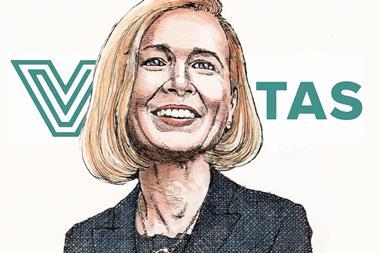NETHERLANDS/UK - APG Asset Management has presented proposals to create hybrid collective pension schemes using age-differentiated lifecycle investing - a move that could help spread risk between generations.
Professor Eduard Ponds, head of research for collective pensions, corporate ALM and risk policy at APG, presented the proposals in a paper written by himself and Roderick Molenaar, head of ALM and risk at APG, at an Exeter University conference (entitled Risk-Sharing in Defined Contribution Pension Schemes).
More specifically, Ponds and Molenaar noted the Netherlands is facing increasing pressures concerning existing collective pension plans as many arrangements are maturing and therefore carrying higher retirement liabilities, which need to be met. Yet schemes tend to operate uniform rights accrual, indexation policy for all ages, contribution rates and uniform assets mixes at the same time as the number of active members is decreasing - leaving younger members to feel they are increasingly paying the cost of maturing liabilities.
In order to tackle the problem, APG has conducted research suggesting sponsors could create a scheme with DC characteristics when young members join but which over time moves the individual's assets into a DB-style structure to ensure member benefits are better protected from risk-sharing.
Under variant B of the proposals - the base variant being wage-indexed DB, conditional indexation and a fixed contribution rate - APG suggested individuals could be given an individual pension account within a collective plan which is 90% invested in a DC strategy with a riskier asset mix at the age of 25, and the 10% DB-like through an annuity account. The amount held in the DC mix would then decrease between the ages of 45 and 65 to 10% DC and 90% DB over time, to eventually give members an indexation-related policy resembling an annuity account.
While the asset mix would be 60% real assets and 40% nominal throughout, the asset allocation would alter depending on the age of the individual to give younger members a higher sum of the return at an early age and lower indexation while those at retirement age would see most of their growth based on indexation, and prevent the need to meet growing liabilities with a conservative asset mix applied to the whole fund.
The DC-DB model is just one of two variants presented by APG to tackle the need for age differentiation policy, as the other focuses on return-related and wage-related indexation.
Variant A focused more on the balance of indexation between younger and older members, to reflect both the real return achieved on investments and wage-related indexation.
Under APG's proposals, younger members would receive a higher proportion of their indexation based on real returns of investments and a smaller sum based on wages. Older members, meanwhile, would see that allocation shift over time to focus more on the wage indexation and less on real returns, in a bid to give younger members a higher percentage of indexation and reflect their role in the growth of liabilities.
Only Variant B is likely to be feasible at present under Dutch regulations and solidarity, Ponds told IPE, as changes would be needed to make Variant A possible.
That said, both solutions could also solve the problem of who owns the property rights of surplus assets, according to Ponds.
The Exeter University conference was designed in part as a response to the UK Department for Work & Pensions risk-sharing review decision in December, which ruled out the possible development of hybrid pension schemes in the UK.
Hosts of the conference said the responses provided to the DWP did not sufficiently represent academic thoughts on risk sharing of pension plans, nor did they sufficiently incorporate international ideas.
Officials from the DWP and the Personal Accounts Delivery Authority will be attending the conference today.
If you have any comments you would like to add to this or any other story, contact Julie Henderson on + 44 (0)20 7261 4602 or email julie.henderson@ipe.com












No comments yet